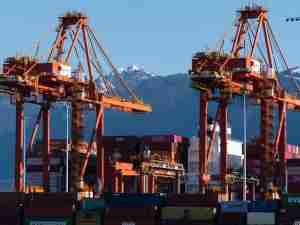China’s exports and imports shrank more than expected in September, as existing U.S. tariffs and the ongoing slowdown in global trade combined to undercut demand.
Exports decreased 3.2% in dollar terms from a year earlier while imports declined 8.5%, leaving a trade surplus of $39.65 billion, the customs administration said Monday. Economists had forecast that exports would drop 2.8% while imports would shrink by 6%.
Key Insights
- The weak exports add pressure on the already deteriorating economy, which is expected to have grown at the slowest pace in the third quarter in almost thirty years. Gross domestic product expanded 6.1% in the three months to September, according to estimates ahead of data due Friday
- Nevertheless, some stabilization may be ahead, as U.S. and Chinese negotiators came to a “phase one” agreement on trade last week that pauses U.S. tariff increases in exchange for increased Chinese purchases of agricultural goods
- Before the deal announced over the weekend, Oxford Economics forecast that the worst is still to come for U.S.-China trade, which has already fallen 20%. “Bilateral trade has already been hit hard and is likely to decline considerably further, especially if tariffs are extended to more goods as threatened,” according to the report before the data from economist Adam Slater
- “The decline was not entirely due to the trade tension,” said Raymond Yeung, chief Greater China economist at Australia & New Zealand Banking Group. Ltd in Hong Kong. “The tech cycle has not been supportive. I don’t think the phase one deal will change the trade outlook materially.”
- The continued slowdown in imports indicates that domestic demand is weakening. This will be damaging for the global economy, which is already facing weakening trade demand.
- “The weakness in exports was mainly driven by the U.S.,”said Michelle Lam, greater China economist at Societe Generale SA in Hong Kong. “In yuan terms growth of shipments to the U.S. slowed from -12.9% in August from a year earlier to -21.1%. That was probably due to the increase in tariffs on the first batch of $300 billion goods effective from September.”








